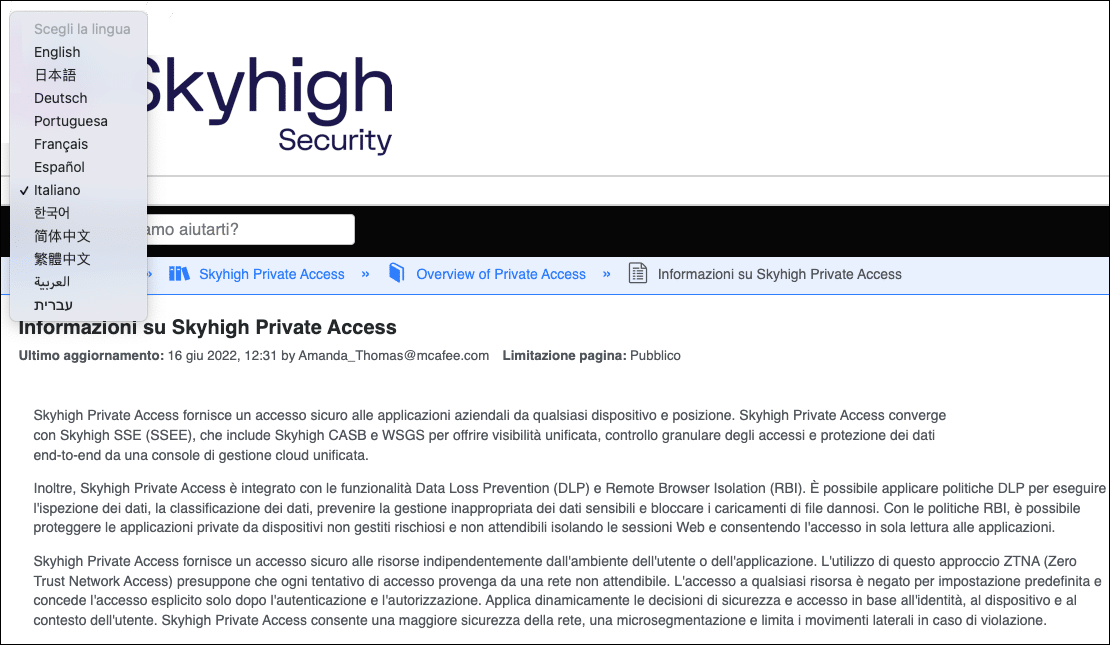By Amanda Thomas - Sr. Manager of Documentation, Skyhigh Security
June 23, 2022 3 Minute Read

Machine Learning sounds like something from science fiction to plenty of us. In fact, the first time “Machine Learning” hit my orbit, I kept picturing a robot speaking to me in complete King’s English sentences thanks to watching “Dr. Who” in the 80’s.

Despite first impressions of the term, ML has grown up as the cloud eclipsed traditional on-prem infrastructure. Thanks to machine learning, and its big brother, artificial intelligence, we’ve seen rapid improvements in platforms, products (even robots!), and cars. In cloud technology, machine learning is a huge part of crunching data and providing information that humans can use to make data-driven decisions. We’re using ML ourselves at Skyhigh Security as we learn patterns of behavior, for example, or to anticipate seasonal trends so our Security Service Edge is always ready to help our customers harness their data.
We didn’t plan on machine learning helping our documentation team until we had our very own mission-critical problem to solve.
The Problem
In early 2022, the documentation team grew in people, along with the amount of content we host in our Help platform. The team dove in, rearranging important legacy content to work in our task-based content platform that serves our content directly from AWS. Our documentation process prioritizes collaboration, quick publishing, on-demand revision, and metrics that guide decisions. For about six weeks we pulled apart PDFs, making things fit our documentation style and philosophy. A few weeks into our transition we suddenly realized our contractual obligations to provide documentation in several languages: Localization.
Flying blind, with content that was needed in several languages almost immediately and no simple way to translate it, I approached my manager with a possible solution: Machine learning-based, on-demand translation that allows users to select their language of choice across our site, providing a consistent look and feel for our users.
The Solution
After a quick discussion with our MindTouch success manager, and vetting by our technical writer based in Germany, it became clear that instant translation was the best option to move forward to create localized content. Leveraging a lightweight feature set also freed us up from the expense of a traditional localization cycle, which requires significant upfront cost and requires some down time. Auto-translation would allow us to support users with several different languages, instantly, and gain insights while avoiding the heavy lift of a full-scale localization workflow.
In fact, this feature didn’t add any overhead to my team or my company. After enablement, it just worked. Machine Learning was instantly translating each topic a customer wanted in French, or Spanish, Korean, and so on. Because we aren’t tied down to a contract with a localization house, we can also switch up the languages we support. For example, right after instant localization launched, we realized we had users in countries whose languages weren’t offered. A few minutes after we requested additional languages, our content was speaking Italian and I oddly began to crave lasagna, my inner Garfield activated.

Double-byte symbols in Japanese, Korean, and Chinese (Simplified and Traditional) are supported along with the conventional European languages – all on-demand. And, over time, these translations will improve thanks to ML.

The customer advocate in me is very proud to have documentation in a platform that extends beyond geography. I’m looking forward to seeing how our new dataset affects documentation decisions moving forward.
What we Learned
The jewel of Skyhigh Security is our award-winning Security Service Edge suite. Site-wide translation means our users won’t feel a seam between SSE products while using our documentation, which is a huge customer experience win. With machine learning always improving natural language usage, we can expect our instant translations to improve without the cost of constant localization passes. It’s learning as we go.
Try the tool and let us know what you think! drop us a line docs_skyhigh@skyhighsecurity.com and chat with the documentation team.
Back to Blogs